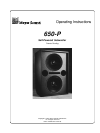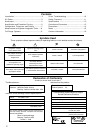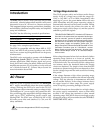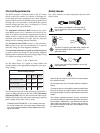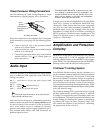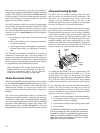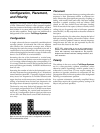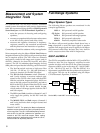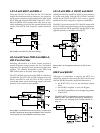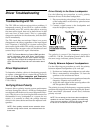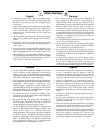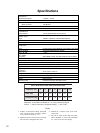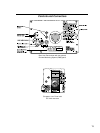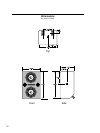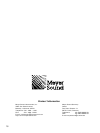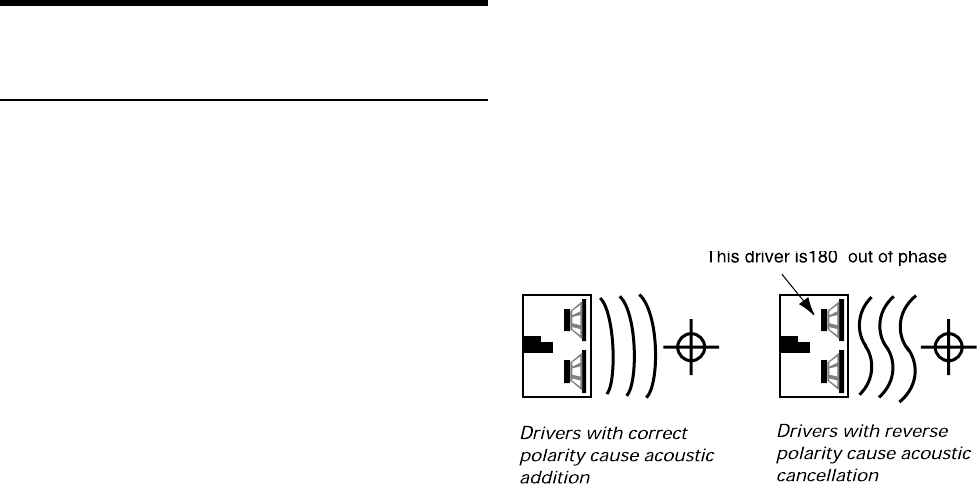
10
Driver Troubleshooting
Troubleshooting with TPL
The TPL LED can indicate serious driver problems, if
interpreted correctly. If one 650-P in a system exhibits
substantially more TPL activity than others receiving
the same audio signal, then one or both drivers in that
unit may have a short circuit. This is a potentially
dangerous condition for the electronics; shut the 650-P
down immediately.
The TPL circuit does not activate if there is no power
dissipation in the driver, regardless of the input signal
level. Therefore, if all 650-Ps in a system receiving the
same audio signal exhibit TPL activity except one, then
that unit may have an open voice coil; disconnect it and
contact Meyer Sound for repair information.
NOTE: The Remote Monitoring System (RMS) provides
precise information about peak power, peak voltage,
and average voltage (VU) for each amplifier channel,
enabling a more complete driver diagnostic than the TPL
LEDs. Contact Meyer Sound for more information about
RMS.
Driver Replacement
To determine whether a driver is functioning properly,
or replace a damaged driver, contact Meyer Sound to
obtain the Low Driver Inspection and Evaluation
Procedure for Self-Powered Series Products (part #
17.010.120.01).
Verifying Driver Polarity
Incorrect driver polarity impairs system performance
and may damage the drivers. All Meyer loudspeakers
are shipped with the drivers in correct alignment. How-
ever, if the driver or circuit wiring has been removed or
disassembled in any loudspeaker in a system for any
reason, it is essential to check the polarity between
drivers in the same cabinet and between adjacent loud-
speakers.
NOTE: Since polarity reversal causes excessive driver
excursion at high source levels, use moderate levels for
these tests.
Driver Polarity in the Same Loudspeaker
Use the following test procedure to verify polarity
between drivers in the same loudspeaker:
1. Place a monitoring microphone 3 ft from the front
of the loudspeaker at the midway point between
the two drivers.
2. Connect a signal source to the loudspeaker and
note the frequency response.
The polarity is correct if the frequency response is
±4 dB 28 – 100 Hz. Cancellation greater than 6 dB in
the same range indicates polarity reversal.
Polarity Between Adjacent Loudspeakers
Use the following test procedure to verify the polarity
between adjacent loudspeakers of the same type:
1. Position two loudspeakers adjacent to each other.
2. Place a measurement microphone 3 ft from the
speakers on the axis between them.
3. Connect a signal source to one speaker and note the
frequency response and overall level.
4. Apply the same signal to the second speaker with
the first speaker still connected.
The polarity is correct if the frequency response remains
constant with a significant increase in amplitude. Broad-
band cancellation (decreased overall level) indicates
polarity reversal.
NOTE: Do not attempt to check more than two adjacent
speakers in one test. Detecting polarity reversal among
more than two speakers is difficult and may damage
the drivers in the cabinet with reversed polarity.



